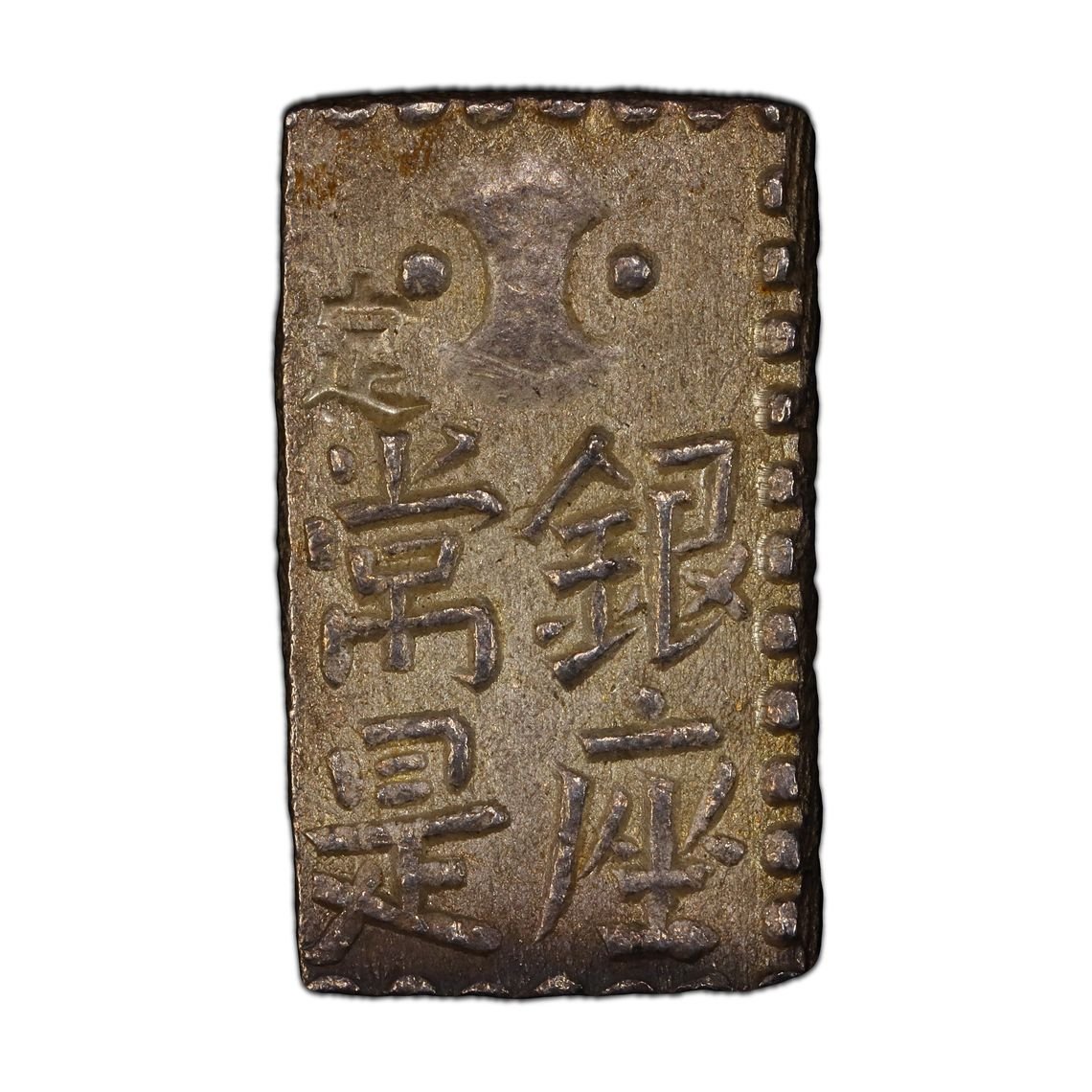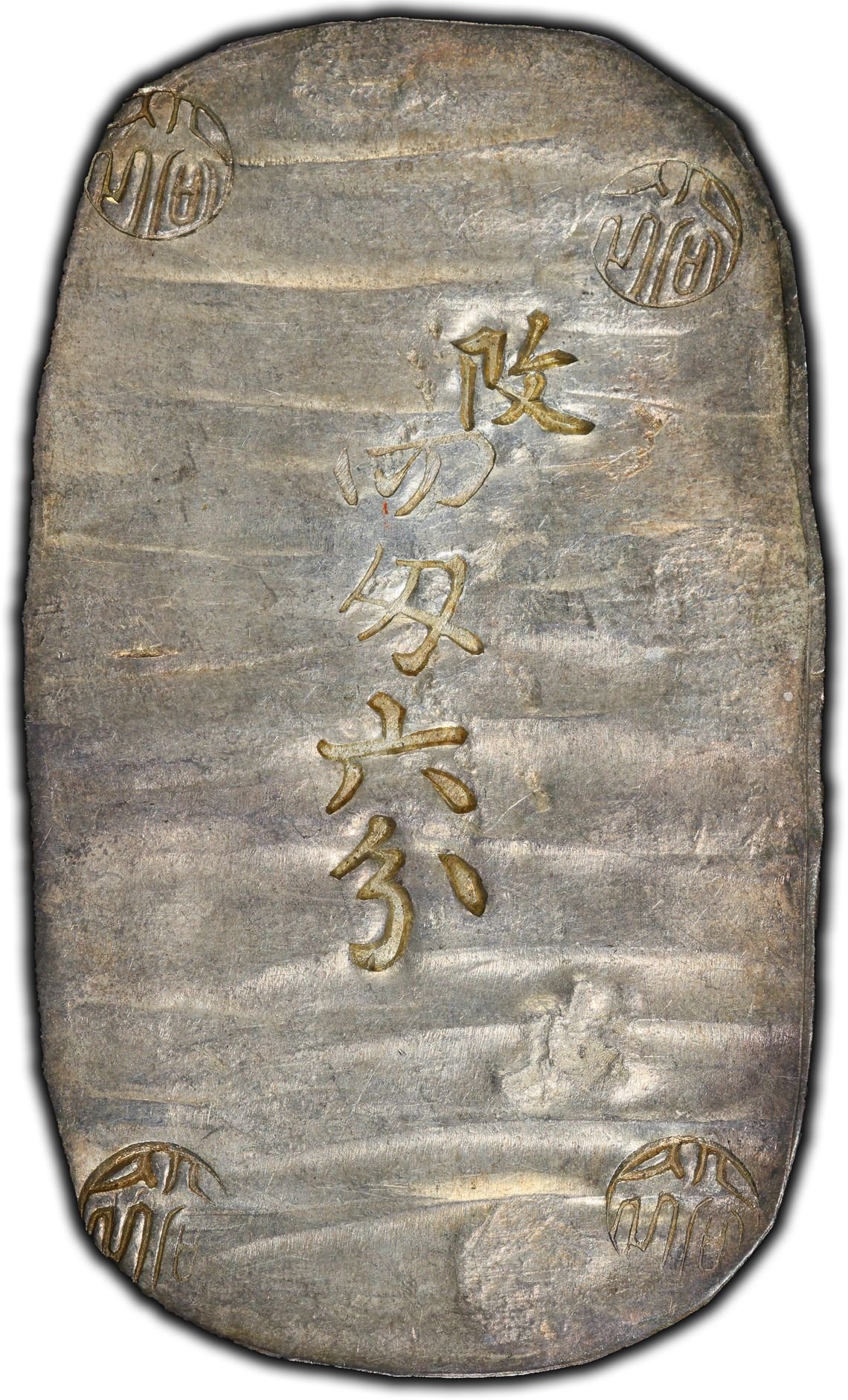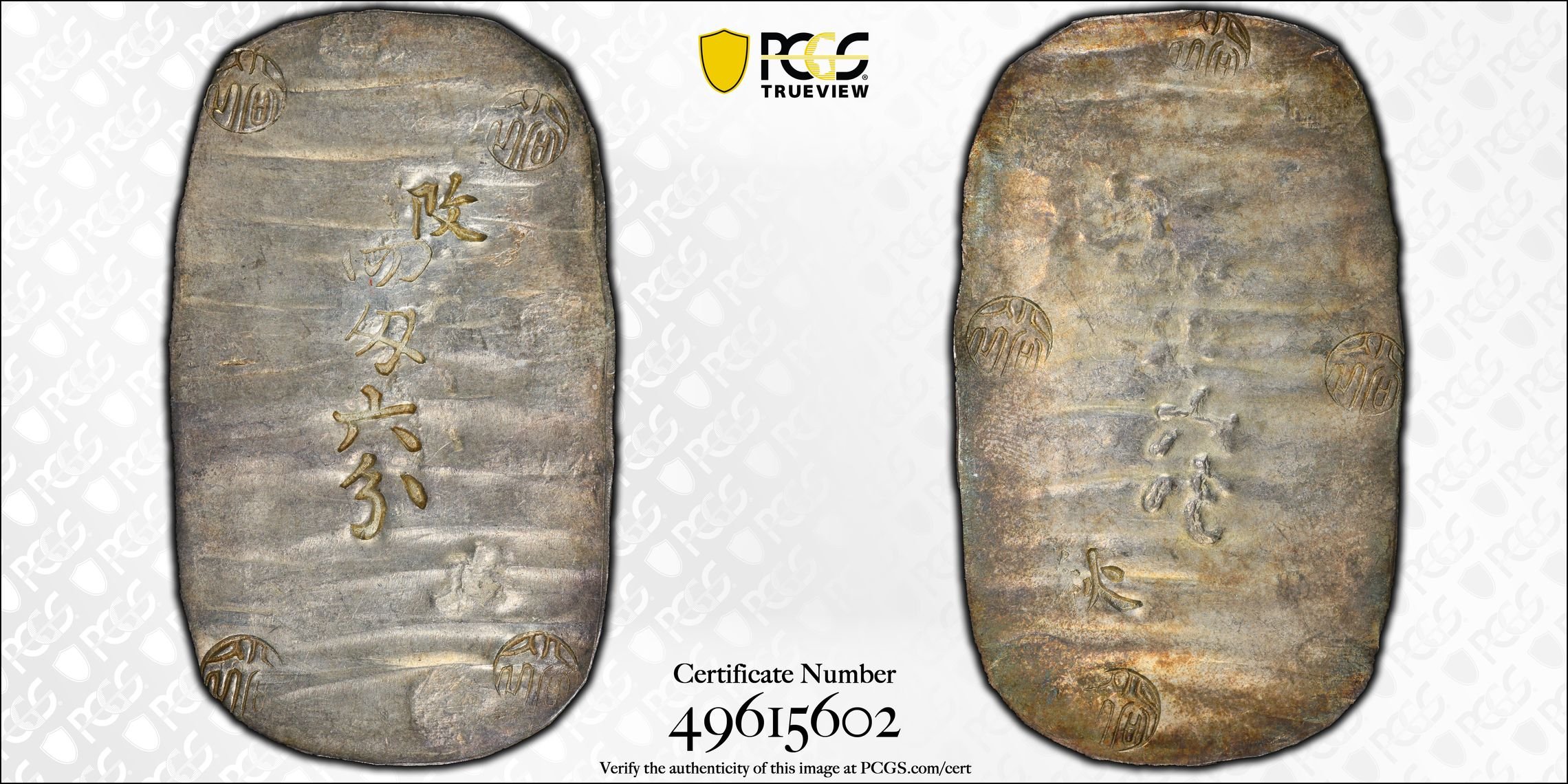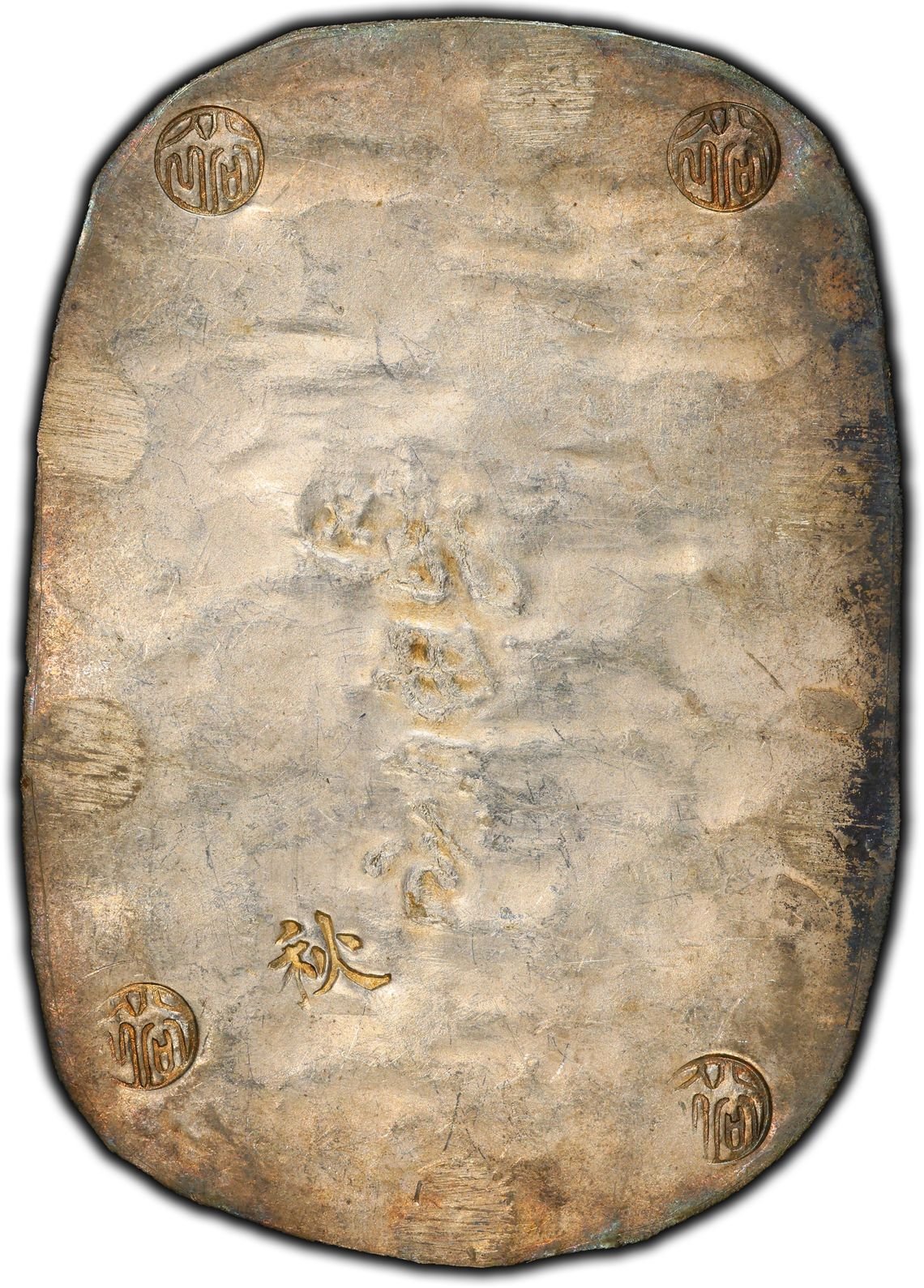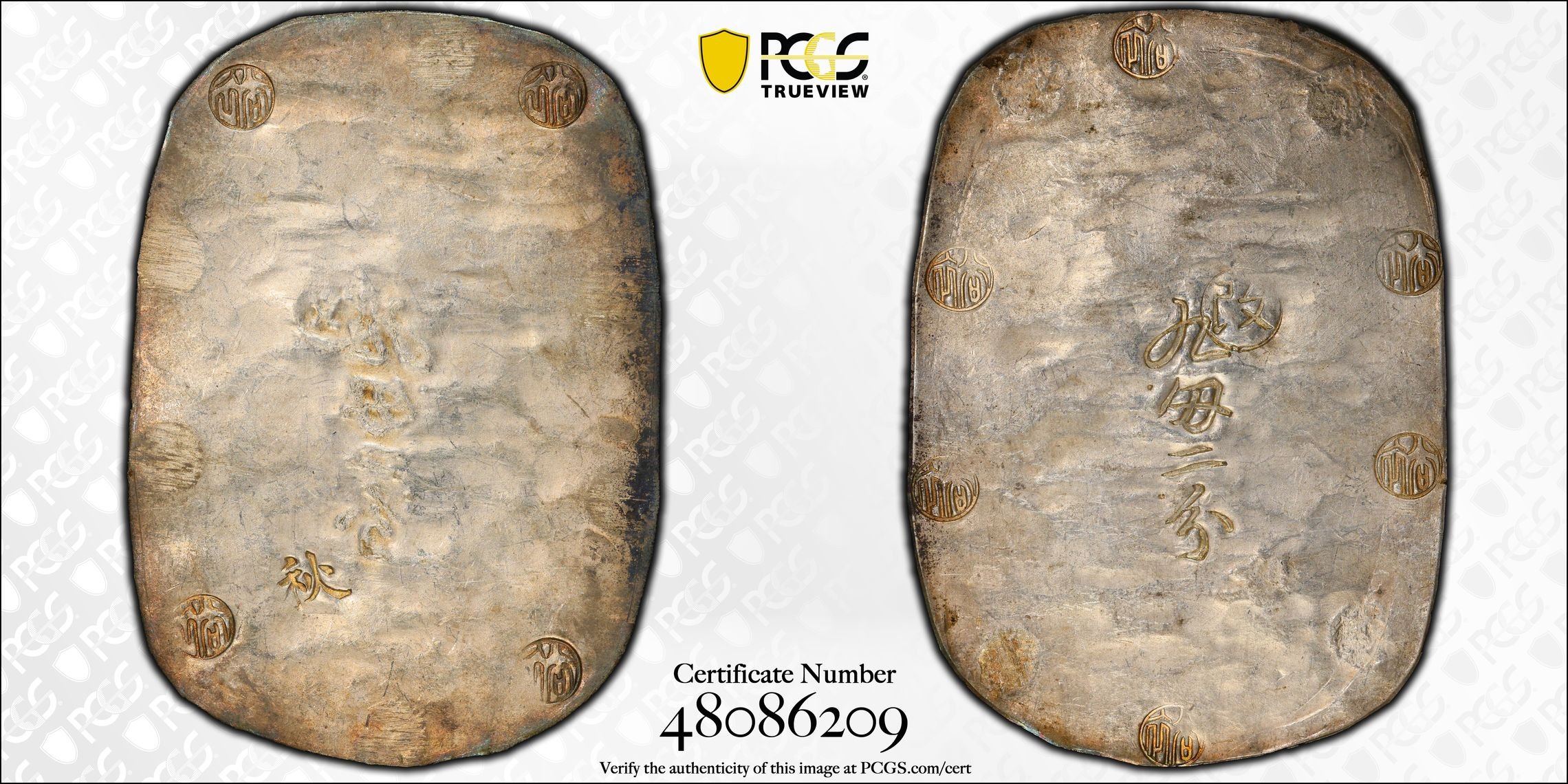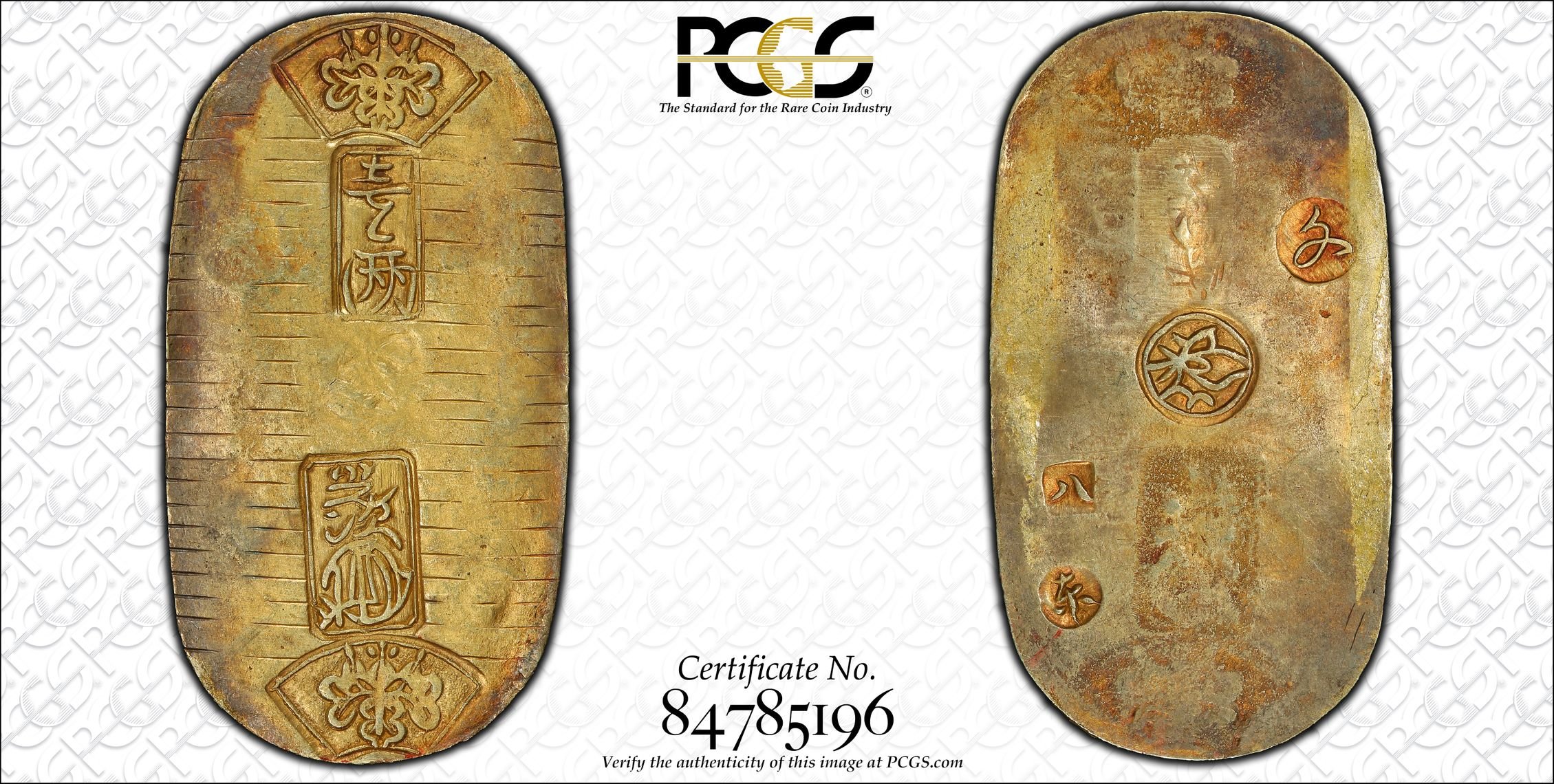The Shu (朱) is a Japanese gold square coin that circulated during the Edo period.
Shu coins with a gold alloy first originated during the Bunsei era as they were first minted sometime in May 1824. These first square coins feature a Paulownia crest with 1 Shu (一朱) on the obverse and has Shozaburo Goto's [ja] signature engraved on the reverse. Initially, they were struck with an alloy of 12.3% gold, 87.4% silver, and 0.3% other miscellaneous material with weights of 1.40 grams.[1] The gold content was intentionally kept low as the Shu was intended to be a subsidiary currency of the Ichibuban, and Koban.[2]
When they were issued for circulation in July of the same year counterfeiters quickly took advantage of their quality. Of issue was the coin's low gold purity as its color was easy to replicate. Although efforts were made to dissolve any silver content on the coin's surface, the gold coloring wore off through circulation which gave way to a mixed and eventually silver coloring.[3] These coins also proved to be unpopular with the public as they were small, unwieldy, and easy to lose.[4] Replacements for the gold Shu in the form of silver coinage began on July 10, 1829, and gold Shu coinage ended in the 3rd year of Tenpō (1832). Legally, the series was discontinued at the end of the 11th year of Tenpō (1840).


